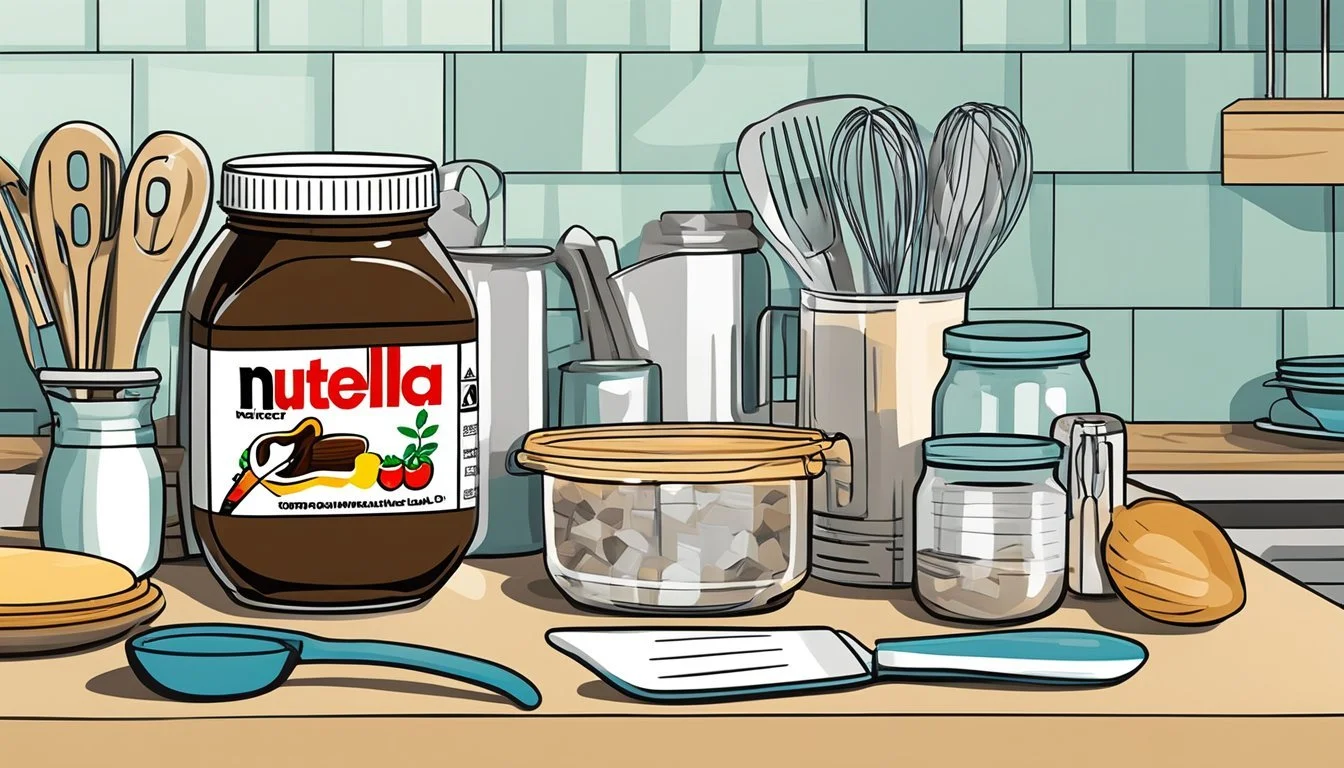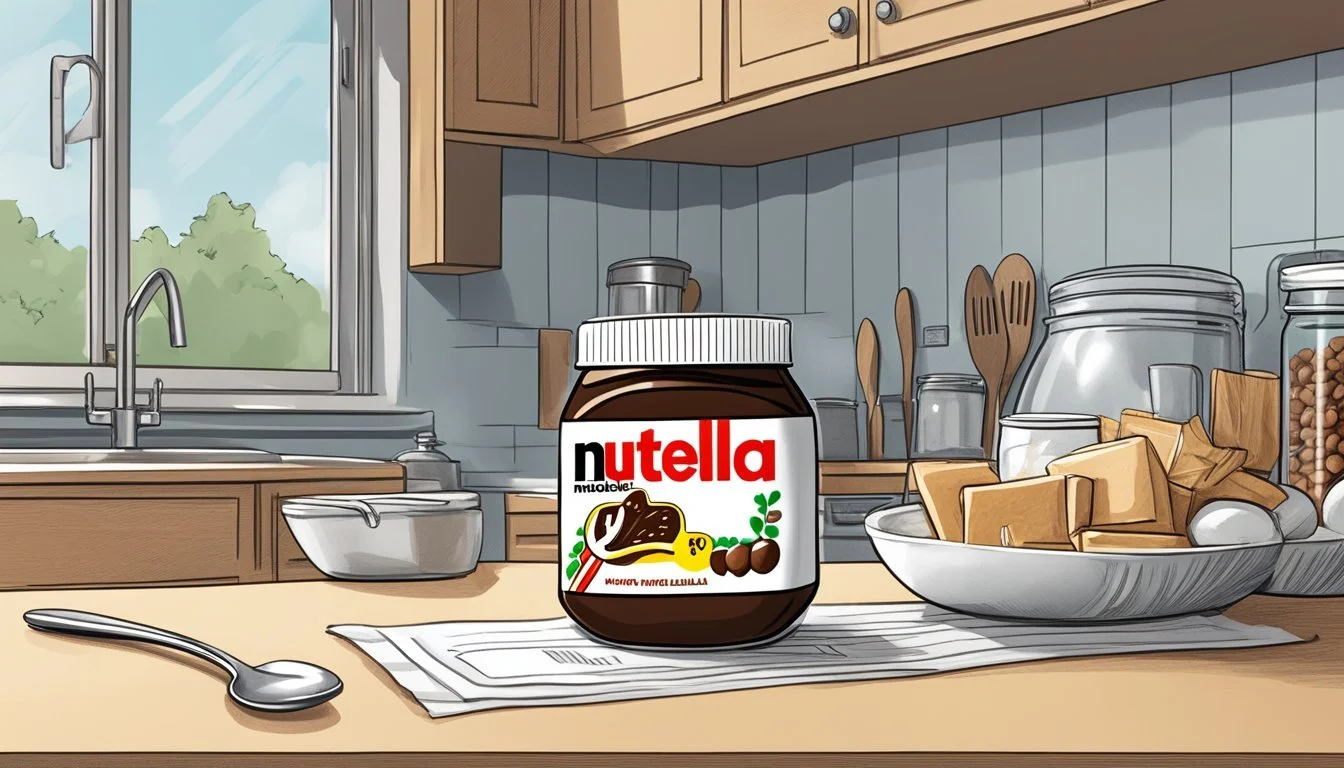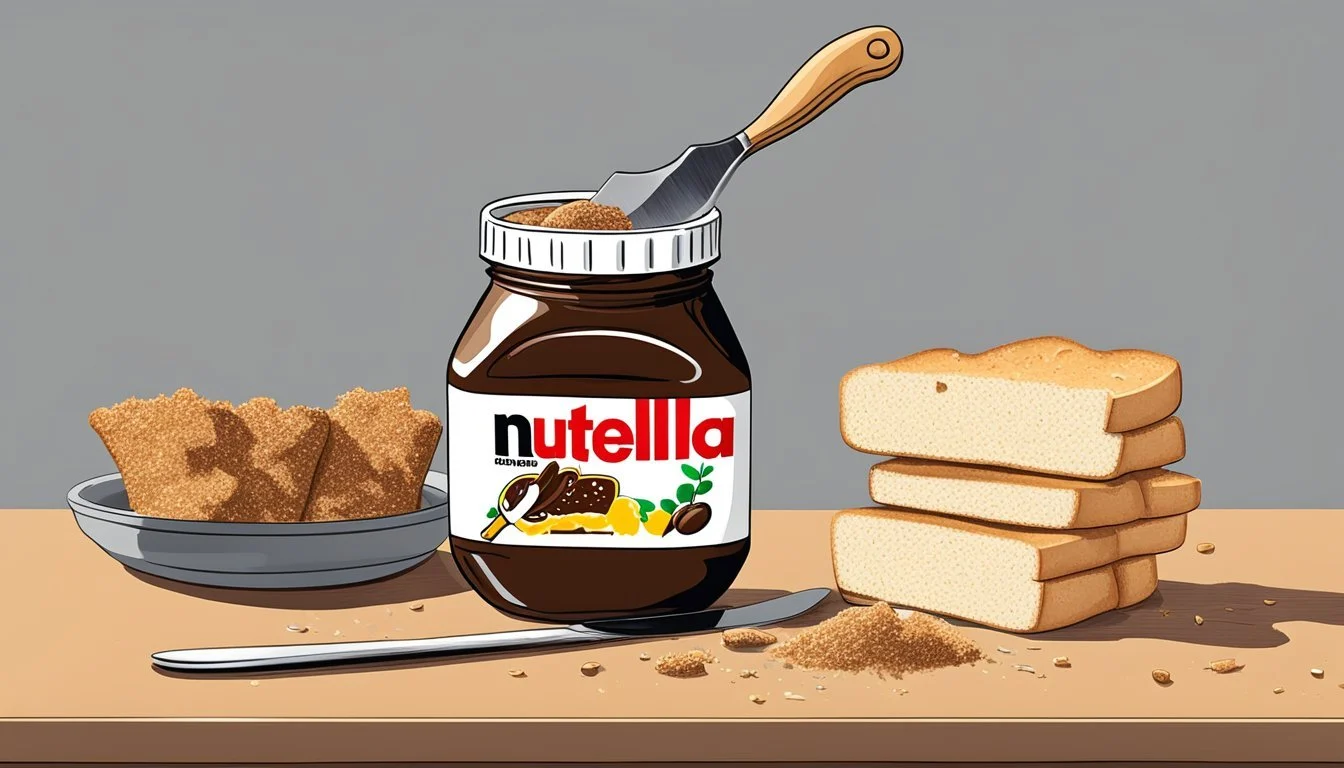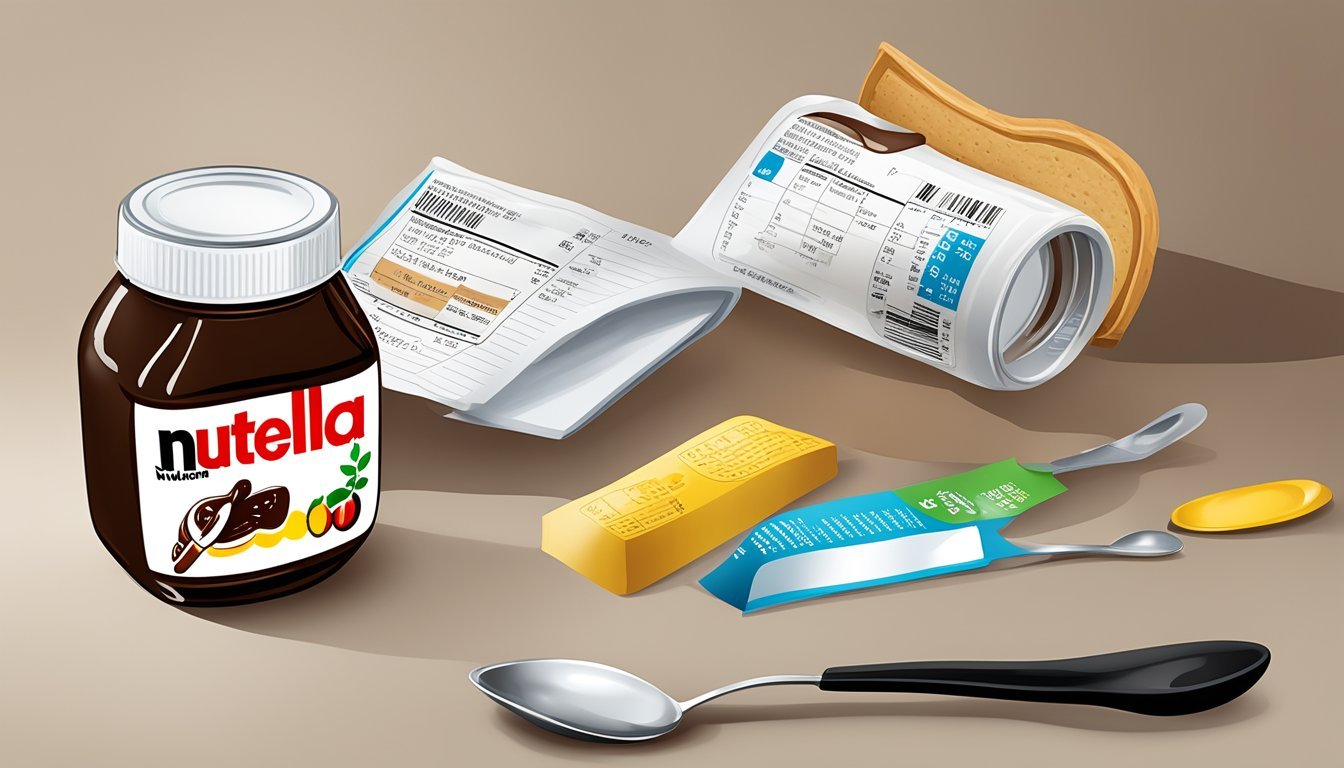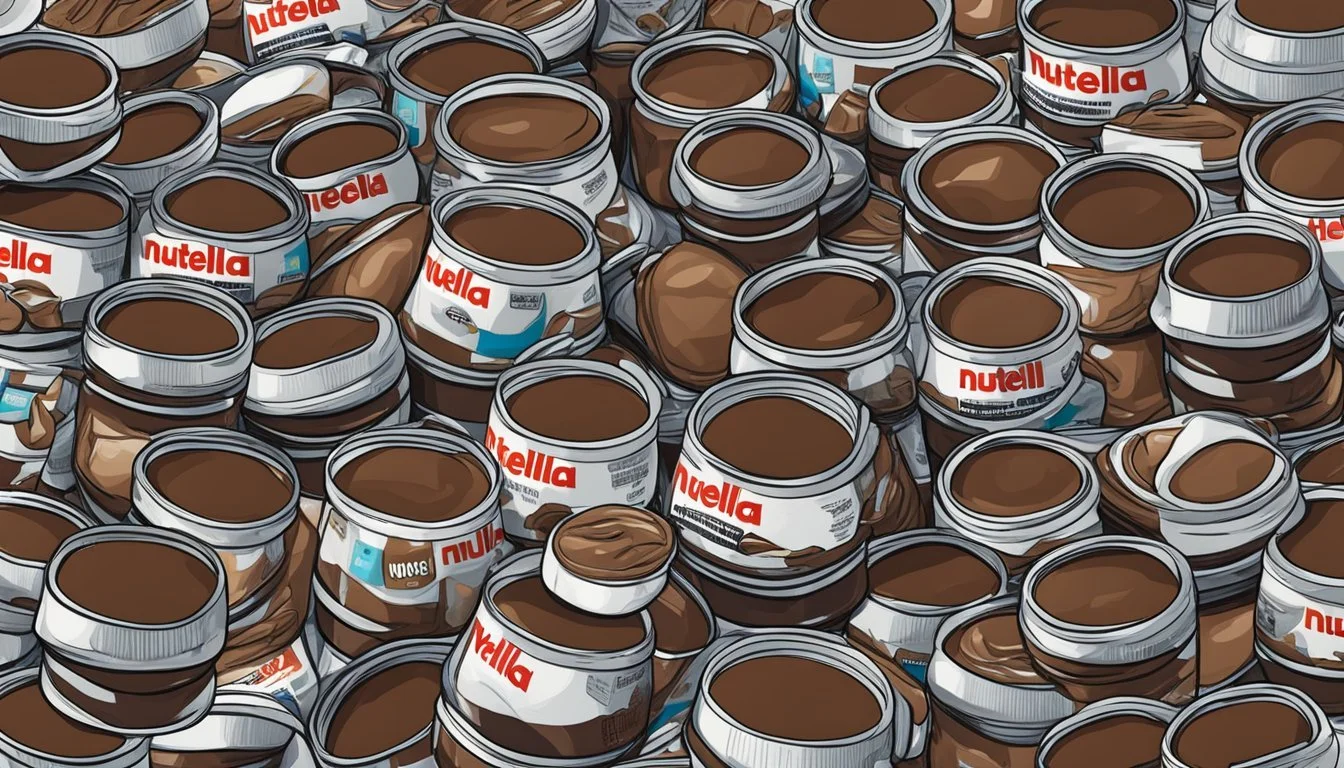How Much Nutella Per Day Is Too Much?
Understanding Daily Limits
Nutella, a popular hazelnut cocoa spread, is often a subject of debate regarding its health implications when consumed regularly. It is primarily known for its rich, sweet flavor, making it a favorite among various age groups, particularly children. While Nutella is marketed as part of a wholesome breakfast, especially when spread on wholegrain toast, its nutritional profile suggests moderation is key. The spread is high in sugar and fat, contributing to its delicious taste but also to the caloric content.
Understanding the ideal portion size is crucial, as exceeding this may contribute to an excessive intake of added sugars and saturated fats. The dietary guidelines suggest limiting added sugar, and with Nutella containing a significant amount per serving, consumers are encouraged to consider this when including it in their diet. Additionally, it's important to examine how Nutella fits into an individual's overall daily nutritional intake, rather than isolating it as a standalone item.
The conversation around Nutella's appropriate daily consumption is ongoing, as nutrition experts emphasize balance, portion control, and the importance of a varied diet. While Nutella can be part of a balanced diet, it is by no means a health food and should be enjoyed in moderation. Consumers should pay attention to nutrition labels and be mindful of how much Nutella they consume in relation to their total daily caloric and nutrient intake.
Nutrition Profile of Nutella
Nutella's nutritional landscape is defined by its caloric density, rich ingredient composition, and notable sugar and fat content. The following breakdown provides a detailed look at its nutritional profile.
Caloric Content and Serving Size
A standard 2-tablespoon (37-gram) serving of Nutella contains approximately 200 calories. Portion control is critical because this serving size can contribute significantly to daily calorie intake, especially if consumed in large amounts or frequently.
Understanding the Ingredients
Nutella is crafted from several main ingredients, which include sugar, palm oil, hazelnuts, cocoa, skimmed milk powder, soy lecithin, and vanillin. Sugar and palm oil are primary components, while cocoa and hazelnuts provide the characteristic flavour. Skimmed milk powder contributes to the creamy texture, while soy lecithin acts as an emulsifier, ensuring ingredient cohesion.
Protein, Fats, and Sugars Breakdown
Fat: Each serving of Nutella contains about 11 grams of fat, half of which is saturated fat from palm oil.
Sugar: It has approximately 21 grams of added sugar, a significant figure compared to the recommended daily intake.
Protein: Nutella offers minimal protein support, with about 3 grams per serving.
Balancing the consumption of Nutella with its high sugar and fat content is essential for maintaining a healthy diet.
Vitamins and Minerals
The spread offers minimal nutritional benefits in terms of vitamins and minerals. It does contain small amounts of calcium and iron, but it is not a significant source of these nutrients. Nutella does provide some vitamin E from the hazelnuts, yet this does not make it a health food by any standard.
Health Considerations
Nutella, a popular hazelnut spread, has specific health implications due to its nutritional content, particularly when consumed in large amounts. This section evaluates how the spread's constituents can affect one's health, especially concerning weight management and chronic diseases.
Risk of Weight Gain and Obesity
Nutella's high calorie and sugar content, with a serving size of two tablespoons containing 200 calories and 21 grams of sugar, could contribute to weight gain if consumed excessively. Overindulgence can disrupt energy balance, leading to obesity over time. The American Heart Association recommends limiting added sugars to no more than 6 teaspoons (about 25 grams) per day for most women and 9 teaspoons (about 38 grams) per day for most men. One serving of Nutella already approaches or exceeds these limits.
Impact on Heart Disease and Diabetes
One tablespoon of Nutella contains 6 grams of fat, including saturated fat from modified palm oil. Saturated fats can raise low-density lipoprotein (LDL) cholesterol levels, which increases the risk of heart disease. Moreover, habitual high sugar intake can lead to insulin resistance, a precursor to Type 2 diabetes. Therefore, moderation is essential to mitigate these health risks.
The Role of Added Sugars
Nutella is laden with added sugars, which are a significant consideration in understanding its health impact. Consuming too much Nutella can contribute to an intake of sugars well beyond the recommended limits. Excessive intake of added sugars is associated with various health issues, including dental cavities, and it can also increase the risk of developing chronic conditions.
Antioxidant Properties
While concerns regarding fats and sugars are evident, it's worth noting that Nutella contains cocoa powder, which offers antioxidant properties. Antioxidants are crucial as they combat free radicals in the body, potentially reducing oxidative stress. However, the amount of cocoa in Nutella is relatively low, so one should not rely on it as a significant source of antioxidants.
Comparisons with Other Spreads
When assessing how much Nutella per day is too much, it's important to consider its nutritional profile compared to other spreads.
Nutella vs. Peanut Butter and Almond Butter
Nutella, a sweetened hazelnut cocoa spread, generally contains more sugar and saturated fat than peanut butter or almond butter. Peanut butter and almond butter are richer in protein and healthy fats, making them more suitable for a balanced diet. For a 2-tablespoon serving, Nutella provides 21 grams of sugar, while a similar serving of peanut butter typically offers about 2 grams of sugar.
Sugar Content:
Nutella: 21g
Peanut Butter: ~2g
Almond Butter: ~2g
Protein Content:
Nutella: 2g
Peanut Butter: ~8g
Almond Butter: ~7g
Comparing with Jams, Jellies, and Honey
Nutella has a similar sugar content to many jams and jellies, often utilized as a dessert topping or breakfast topping. In contrast, honey contains natural sugars and offers trace amounts of vitamins and antioxidants. A 2-tablespoon serving of honey contains approximately 17 grams of sugar. However, jams and jellies may have added preservatives, whereas Nutella does not.
Sugar Content:
Nutella: 21g
Jam/Jellies: ~20g
Honey: 17g
How Does Nutella Stack Up Against Fresh Fruit Spreads?
Comparatively, fresh fruit spreads made from fresh fruit typically have lower sugar content and are high in fiber, making them a healthier option than Nutella. They don't contain the added fats found in hazelnut spreads and often have a broader range of vitamins and minerals.
Key Nutrients in Fresh Fruit Spreads:
Lower sugar
High fiber
Rich in vitamins
Nutella in the Kitchen
Nutella is a versatile spread that has become a staple in many kitchens. Often used to add a sweet, nutty flavor to a variety of dishes, understanding how to incorporate Nutella creatively while adhering to sensible serving sizes is essential for both taste and health.
Creative Uses in Recipes
Nutella's rich and creamy texture makes it a favorite ingredient for enhancing a range of recipes. It serves as an excellent dessert topping or filling for pastries and baked goods. Here are specific ways to bring Nutella into your cooking:
For pastries: A dollop of Nutella can transform ordinary croissants and French toast into delectable treats.
On pancakes and waffles: Spread Nutella on pancakes or waffles for a sweet breakfast upgrade.
With ice cream: Nutella is perfect for swirling into ice cream or using as a topping to create an indulgent dessert.
Serving Size Recommendations
It’s important to enjoy Nutella in moderation due to its sugar content. The FDA suggests a serving size of 2 tablespoons, which equates to approximately 200 calories. This recommendation assists individuals in managing their intake:
Bread and toast: Limit spreads to 1-2 tablespoons per slice.
Baking: When using Nutella in recipes, carefully measure the amounts to prevent excessive use.
Pairings with Tea, Coffee, and Other Beverages
Complementing Nutella with beverages can create a delightful taste experience while balancing flavors. Nutella pairs well with:
Tea: Opt for a mild, non-herbal tea to avoid overpowering the subtle flavors of Nutella.
Coffee: A strong coffee can be an excellent contrast to the sweet and rich flavor of Nutella, particularly in desserts.
Other beverages: Nutella can be incorporated into smoothies and milkshakes for a decadent twist.
Consumer Insight and Regulations
This section examines how consumer perceptions and surveys influence regulations on products like Nutella, the FDA's specific stance on Nutella consumption, and the impact of marketing and advertising regulations.
Public Perception and Surveys
Shoppers and consumers often provide valuable data through surveys that help regulatory bodies understand public consumption habits. In relation to Nutella, surveys have indicated varying levels of consumption, with some evidence suggesting a significant portion of consumers use Nutella as a spread on toast. The FDA considers such data to inform its guidelines, pressing for public comments to gain insight from a broader demographic, including mothers and regular shoppers, which helps in reassessing the regulatory class of such food items.
The FDA's Stance on Nutella
The Food and Drug Administration (FDA), which oversees the regulation of food products, scrutinizes how items like Nutella are categorized and thus governs their nutrition label requirements. Recently, the FDA asked the public to inform their understanding of typical consumption, which indicates potential reconsideration of Nutella's regulatory class. The FDA has historically labeled Nutella as a dessert topping, which affects the serving size and nutritional information presented on labels. This classification is under review, potentially aligning the labels more closely with actual consumer use.
Marketing and Advertising Regulations
Marketing and advertising regulations have substantial impacts on how products such as Nutella are presented to consumers. A petition submitted to the FDA requesting a reconsideration of Nutella's serving size on nutrition labels underscores the intricate relationship between consumer trends, advertising practices, and regulatory oversight. Advertisements are required to reflect the reality of a product's use and claims must not be misleading. The FDA oversees these regulations to ensure that consumers are making informed dietary choices based on accurate and clear information depicted on labels and in advertising.
Nutella's Historical Background
Nutella has its roots in the hardships of World War II and has evolved into the world's favorite hazelnut chocolate spread. The brand has withstood the test of time, transforming shortages into a timeless culinary creation.
The Origins of Nutella
The story of Nutella began during World War II when cocoa was scarce. Pietro Ferrero, a pastry chef in Italy, decided to meet this challenge head-on. In 1946, he created a sweet paste called Gianduja, which combined the few cocoa supplies available with hazelnuts, sugar, and vegetable oil. The original mix was shaped into a loaf that could be sliced and placed on bread, earning popularity among Italian families who were economically recovering from the war.
Evolution of the Recipe
Pietro Ferrero's initial recipe was refined over time. In 1951, the Ferrero company adjusted the formula and introduced a creamy version named Supercrema. It was a product that needed to be spread with a knife, which made it more versatile and significantly easier to use. Years later, the Ferrero family modernized the product further, rebranding it as Nutella, the decadent hazelnut chocolate spread enjoyed in homes around the globe. This rebranded spread was first introduced to the market on April 20, 1964, and has since become an iconic brand under the Ferrero umbrella.
Impact on Environment and Sustainability
Nutella's environmental impact is primarily associated with its use of palm oil, a key ingredient. Ferrero, the company behind Nutella, acknowledges these concerns and has made commitments to sustainability.
Palm Oil and Deforestation Concerns
Palm oil cultivation is linked to significant deforestation, threatening biodiversity and increasing greenhouse gas emissions. Nutella, which contains palm oil, has been scrutinized for its environmental footprint. Deforestation primarily occurs as forests are cleared for palm oil plantations, which reduces the habitats for wildlife, including endangered species. This process can also contribute to climate change, as the carbon stored in trees is released into the atmosphere upon their removal.
Ferrero's Commitments to Sustainability
Ferrero has responded to these environmental concerns with specific initiatives. They have developed the F-ACTS (Ferrero Agricultural Commitment to Sustainability) and the FFV (Ferrero Farming Values) to promote more sustainable farming practices. They aim to:
Source natural ingredients responsibly
Minimize their ecological footprint
Support local communities in farming regions
Furthermore, Ferrero commits to sustainable packaging solutions and sourcing palm oil that does not contribute to deforestation. They work with non-governmental organizations to advance these sustainability efforts.
Technological Advancements
In the realm of Nutella's production and marketing, technological advancements have played a pivotal role in scale and reach enhancements. Advanced technologies not only streamline the making of this beloved hazelnut spread but also bolster its global marketing strategies.
Production Improvements
Manufacturers have increasingly turned to technologically sophisticated machinery and processes to increase Nutella's production efficiency. Automated systems and robotics have been integrated at various stages of the manufacturing process to ensure consistent product quality and to improve output rates. For example, they might employ precision sensors during the mixing phase to maintain the exact ratio of ingredients like hazelnuts, cocoa, and palm oil. Through rigorous training programs, employees develop the necessary skills to manage these advanced production lines. Moreover, continuous development and improvement of these technologies are crucial for meeting growing consumer demand and managing resources effectively.
Nutella and Digital Marketing
The marketing landscape for Nutella has been revolutionized through digital channels. Ferrero, the company behind Nutella, utilizes various online sites and apps to connect with its consumer base. They've developed targeted advertising campaigns, leveraging data analytics to understand consumer behavior and preferences. This approach optimizes marketing efforts, ensuring they reach their intended audience through the most effective digital means. Social media platforms, for instance, offer a space where Nutella fans can engage with the brand, promoting customer loyalty and broadening its market. Digital marketing tools and training equip the Nutella brand to craft compelling content that resonates with a diverse audience.


